Another day, another travel adventure! This time we head east to explore Fort Walsh National Historic Site on the Saskatchewan side of Cypress Hills Interprovincial Park. Come along as we trip through time.
Disclosure: This post contains affiliate links. If you make a purchase, we may earn a small commission at no extra cost to you. Thanks for supporting our adventures!
Table of Contents
Time Travel at Fort Walsh National Historic Site
Visiting Cypress Hills? Don’t miss a walk into Canada’s past with a trip back in time at Fort Walsh National Historic Site. It’s where a new law and order reigned in the wild west. This Northwest Mounted Police (NWMP) fort played a key role in establishing Canadian law in the late 1800s. Join us for a tour and hike in the hills at the western edge of Saskatchewan.
Love history surrounding the NWMP? Be sure to check out these related posts:
Southern Alberta Adventure: NWMP Fort Museum & Musical Ride
Fort Whoop-up, Alberta | Canada
Alberta Adventures in Police Outpost Provincial Park
What is Fort Walsh known for?
In 1924, Fort Walsh was declared a national historic site for a couple of reasons:
- Fort Walsh was the headquarters of the Northwest Mounted Police from 1878-1882
- It played an important role in enforcing Canadian law, implementing Canada’s Indian policy and in supervising Sitting Bull (Tatanka Iyotanka) and the Lakota people who fled to Canada after the Battle of Little Big Horn.
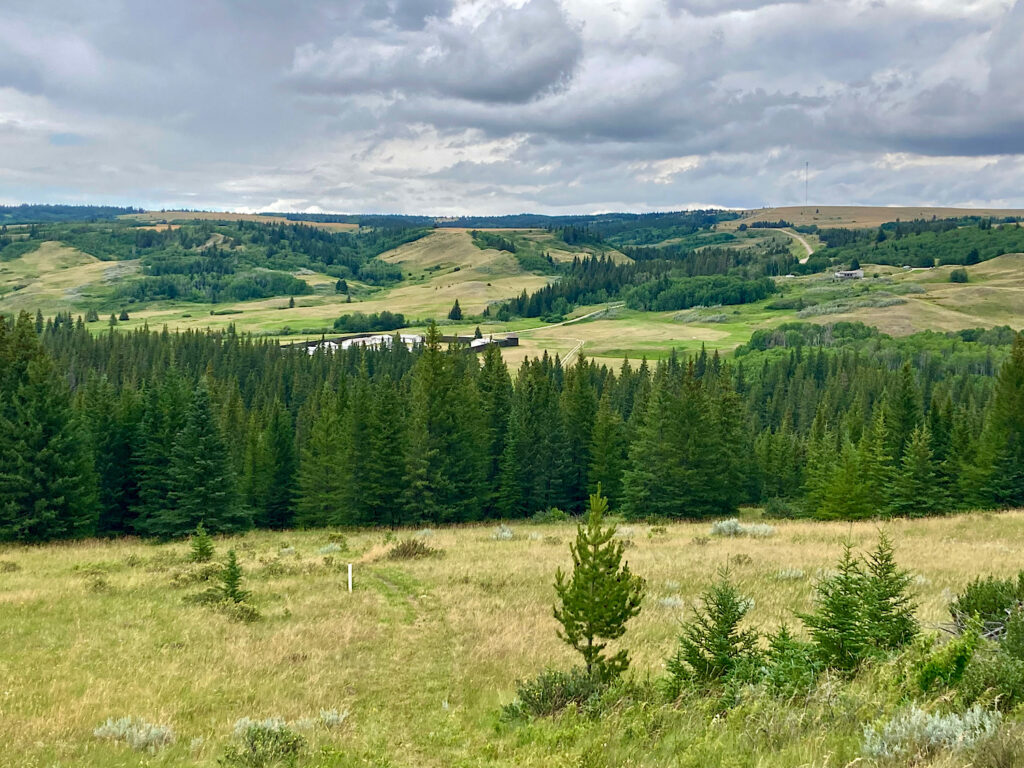
What is there to see and do at Fort Walsh NHS today?
Start with a history-laden Visitor Centre. Add in a historic cemetery or two. Join a guided tour. Set out on a hike. Snap up the photo ops. There’s plenty to see and do at Fort Walsh.
First stop on our arrival was the visitor centre. Here we booked a guided tour for 1:30 pm (tours run 4 times a day at 10:30 am, 12 noon, 1:30 and 3:00 pm – but note that guided tours have an extra fee above general site entrance).
We spent the next half hour before it started quickly working our way through the history exhibits – covering everything from the area’s prehistoric past to the arrival of NWMP.

Discovering the History of the NWMP in Cypress Hills
Wandering displays we followed the timeline of key events in the area.
In 1754, trader and explorer Anthony Henday visited the Cypress Hills. His goal? To try and persuade the Blackfoot Tribe to start trading with the Hudson Bay Company. Their response? Thanks, but no thanks.
John Palliser – renowned geographer and explorer – swung by the area in 1859. His comment upon reaching the hills? “A perfect oasis in the desert.”
Tragedy struck on June 1, 1873, when a group of American wolf hunters attacked a Nakoda camp near Abel Farwell’s and Moses Solomon’s trading posts in a dispute over horses.
When the camp was attacked – on what is now the Cypress Hills Massacre National Historic Site – many Nakoda people were killed. This event would hasten the formation of the Northwest Mounted Police.
Establishment of the NWMP & the role of Fort Walsh
The Canadian government was already looking to establish a dominion police force to patrol the “lawless” west. The massacre deemed it necessary. On July 8, 1874, 300 recruits marched west from Fort Dufferin, Manitoba. Their goal was to establish law and order – from ending the illegal whiskey trade to patrolling the Canada-U.S. border.
Inspector James Morrow Walsh, and officers from “B” Division of the Northwest Mounted Police established Fort Walsh in June of 1875.
Approximately 5,000 Lakota people left the United States to seek peace and safety in Canada after the Battle of the Little Big Horn starting in 1876. The Lakota people came north under the leadership of men like Lame Brule, Spotted Eagle, Bear’s Cap, Four Horns, and medicine man and leader Sitting Bull and settled relatively close to Fort Walsh at Wood Mountain.
In 1877, General Terry of the U.S. Army led a delegation to Fort Walsh where he met with Sitting Bull and others. He encouraged the Lakota people to return to the United States. The Lakota saw no benefit in returning to U.S.. NWMP Commissioner MacLeod saw no reason to force the removal of the Lakota from Canada, so long as they stayed peaceful.
Fort Walsh was the Mounted Police post nearest to Wood Mountain. In response to government concerns about the Lakota presence in Canada, the Fort was made Headquarters of the police force in 1878. Fort Walsh would remain headquarters until 1882.
Historic Cemeteries
With minutes to spare before the tour, we left the visitor centre displays and took the quickest option of walking down the paved road to the fort. Part way down the hill, we had to stop at the NWMP Cemetery. This is where Constable Marmaduke Graburn, the first member of the NWMP to be killed in the line of duty, was laid to rest following his murder in 1879. After Fort Walsh was abandoned in 1883, civilians were also buried in this cemetery.

This is one of two cemeteries at Fort Walsh. The other is a strictly civilian cemetery. It was used by Metis families and other civilians from the townsite of Fort Walsh prior to 1883. Many of the identified graves are associated with the McKays; a family of Scots Metis, who established a small trading post and farm in 1872 near the site of Fort Walsh. Also buried here is Francis (Frank) Clark, the manager of the I.G. Baker store in the town of Fort Walsh. Mr. Clark fell victim to mountain fever which plagued Fort Walsh in the late 1870s and early 1880s.
Enjoy finding stories written in stone?
Check out our post on Exploring Historic Graveyards.
Guided Tour of the Fort
We joined the group of several families and couples inside a small building to the right of the white-washed entrance gates. The group gathered around a diorama of the fort.
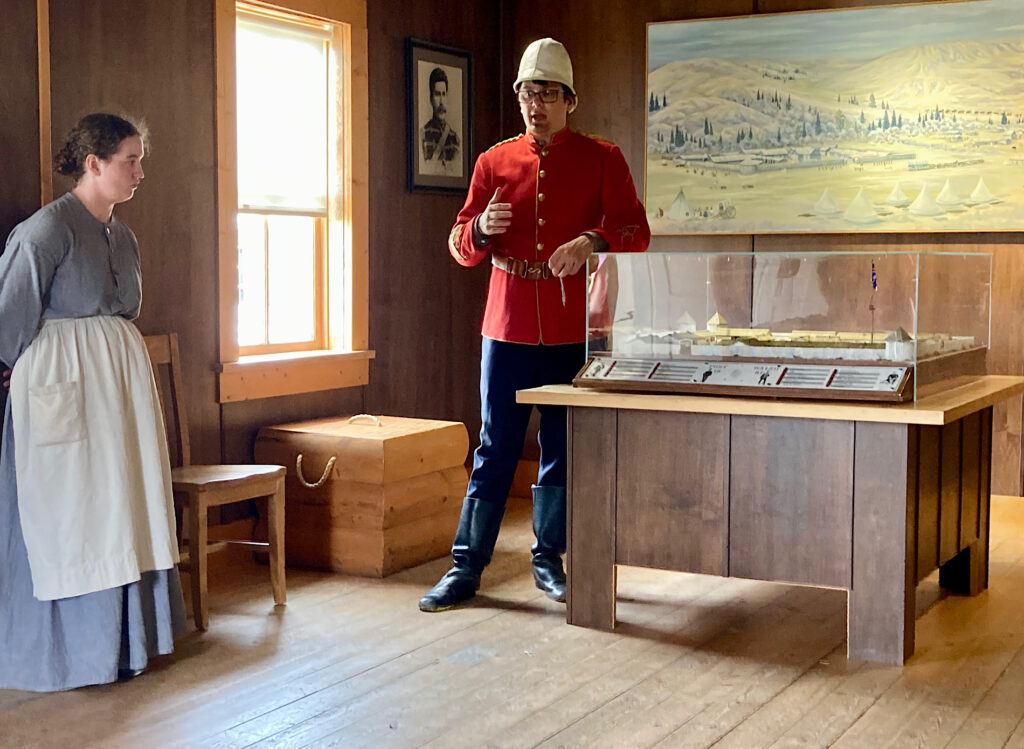
Setting off, we toured several buildings not available to visit except by guided tour. First up was the Commissioner’s Residence. It’s a replica built in 1943 to showcase the rustic log structure with dominant fieldstone fireplace.
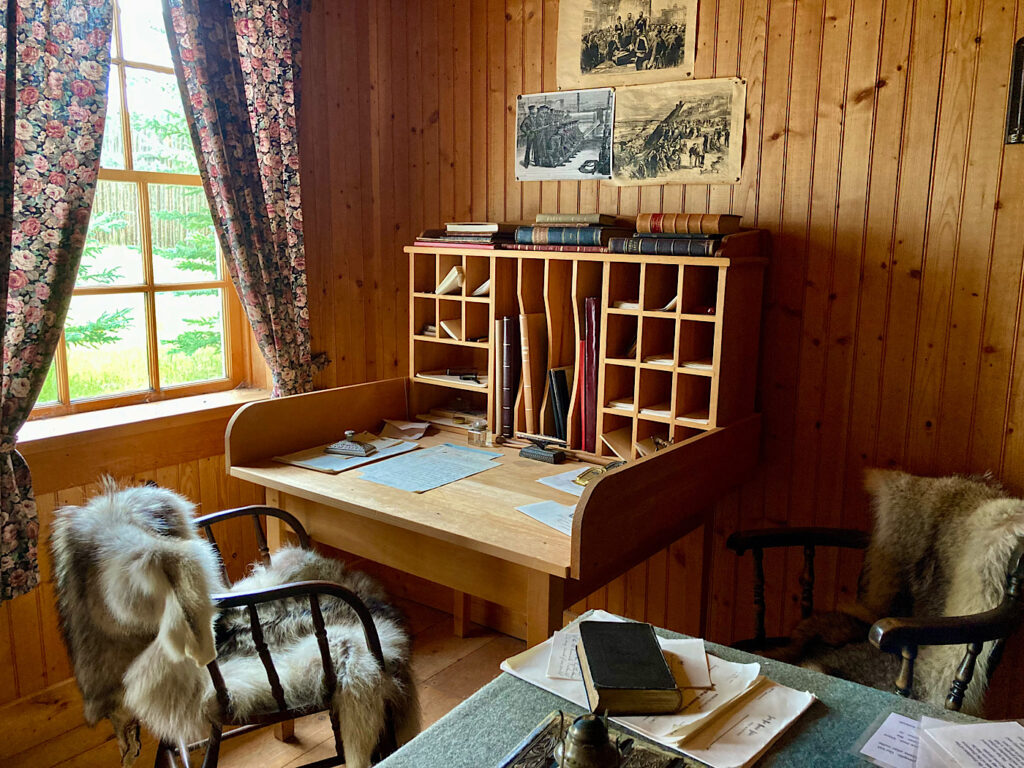
We strolled past the bath house and on to the long, rectangular-shaped stable. Although a reconstruction of the original, this building itself saw 25 years of use as the main stable for the RCMP’s horse breeding operation (until it moved to Ontario in 1968).
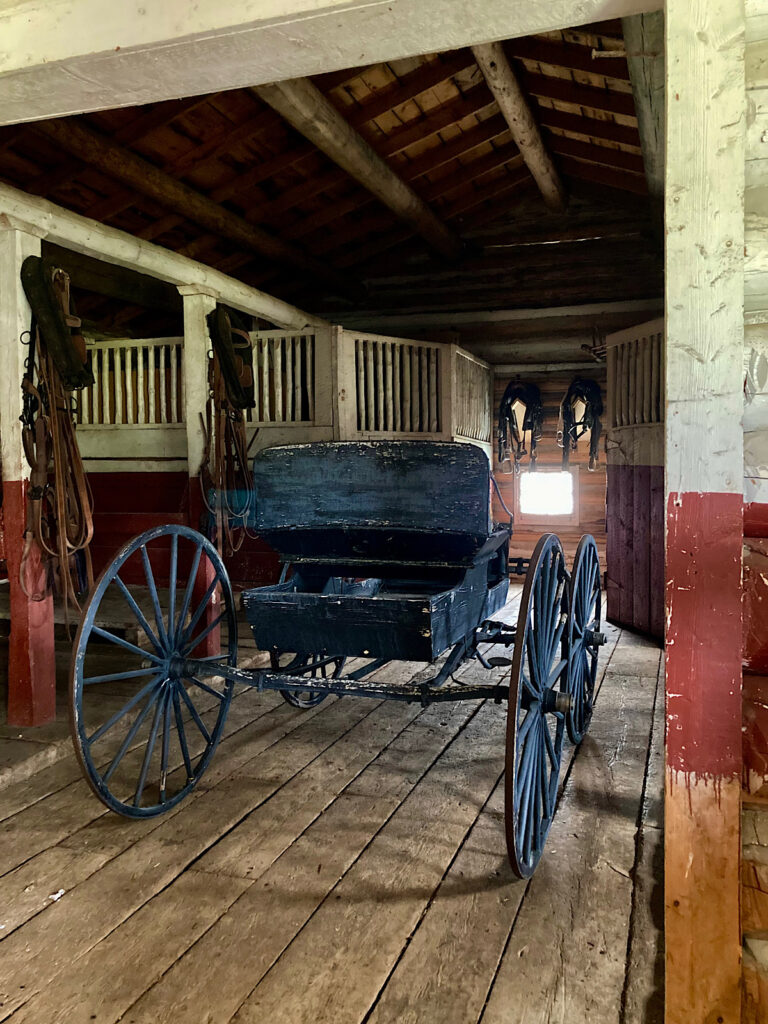
Did you know? Retired RCMP Commissioner Stuart Taylor Wood turn the old Fort Walsh site into a remount station in 1943 to raise the RCMP’s famed black horses. He had the fort rebuilt as closely as possible to the 1875 original. After Wood died in 1966, the fort was turned over to Parks Canada.
Our final stop on the tour was the enlisted men’s barracks. It’s easy to imagine men gathered at night around the communal table in the next room beside a roaring fire while the rain falls… no wait, that’s what is happening outside right now!
Hiking at Fort Walsh National Historic Site
As the clouds moved on, we meandered from the fort past the tipi. Resident First Nations historian Matthew was in between groups on the archaeological tour. We could’ve chatted for hours, but the replica fur trade post and store and a walk in the coulee was waiting.
There are two marked trails at Fort Walsh. The Metis Trail is a family-friendly 0.5 km (0.3 mi) flat walk. We wanted to visit the Massacres Site via the 6 km (3.8 mi) backcountry loop trail.
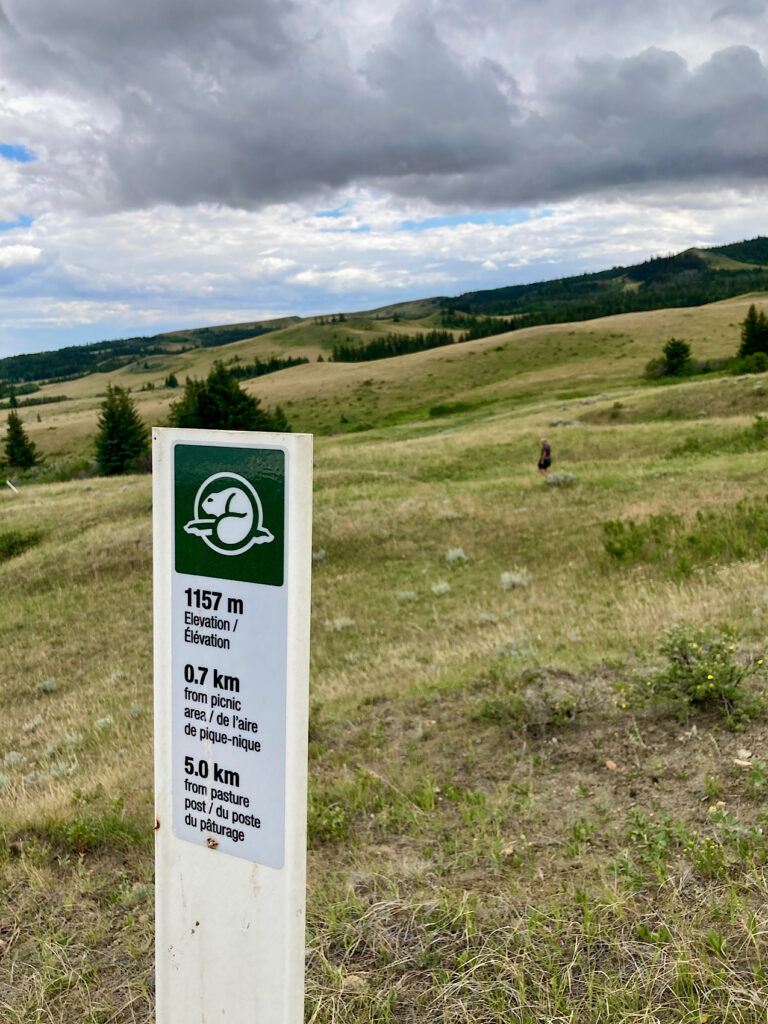
The trail crosses the creek, meanders through the woods for a minute and then starts to seriously climb a ridge. It’s overcast but warm. Wildflowers are blooming in profusion – prairie species we don’t often get to see like coneflower.
Finding the past at trail’s end
We make our way down to a set of fortified buildings. The entrance is locked. There is no signage. It’s a reconstructed trading post. Many of these traders were involved in the whiskey trade. Selling watered down concoctions of alcohol laced with a variety of ingredients was a lucrative – if deadly – side hustle.
Crossing the creek, we come to the road and a metal signpost for the Massacre site. Again, the building is locked but we peer into the past. The sky turns moody yet again and rain starts spitting – somehow fitting for this poignant site.
Time to head back.
As we head across grassy slope towards Fort Walsh, the rain picks up in volume and velocity. The trail starts to get slick. By the time we’re back onto road for the last few hundred metres to the fort, it’s dumping rain. Umbrella worked well for upper body; the lower half, well good thing there’s heat in the truck.
We walk back up to the Visitor Centre, now closed at 4:30 pm. Walking around the back of the building, we stop to take in the bronze statue. There is a First Nations rider and NWMP rider. Silently they wave at each other in passing.
It’s another time in place.
Looking for more Saskatchewan adventures? Check out these posts:
Saskatchewan Adventures: Moose Jaw Murals and More
Another Saskatchewan Classic: Moose Mountain Provincial Park
Canoeing the South Saskatchewan River
Actively Exploring Prince Albert National Park’s Past
Is Fort Walsh worth visiting?
If you enjoy exploring historic sites, Fort Walsh is a must. It played a pivotal role in the unification of this country from east to west.
Find out specifics about tours, trails and more on the Parks Canada – Fort Walsh visit page. Start planning your own adventures now.
Pin this post for future reference!



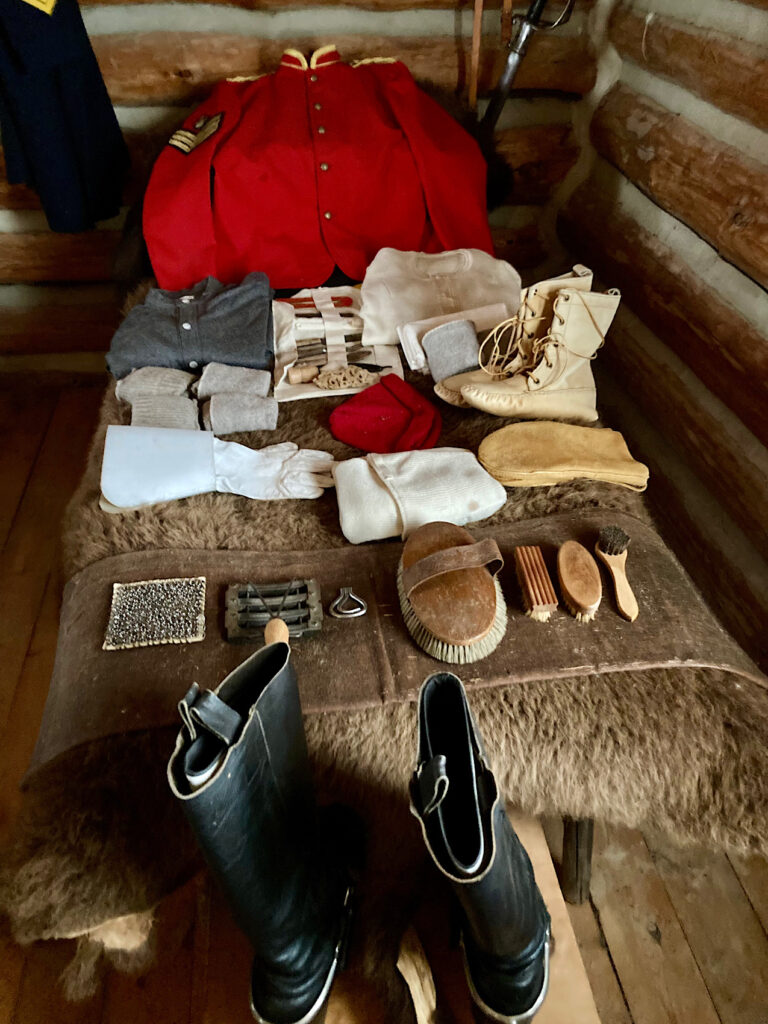
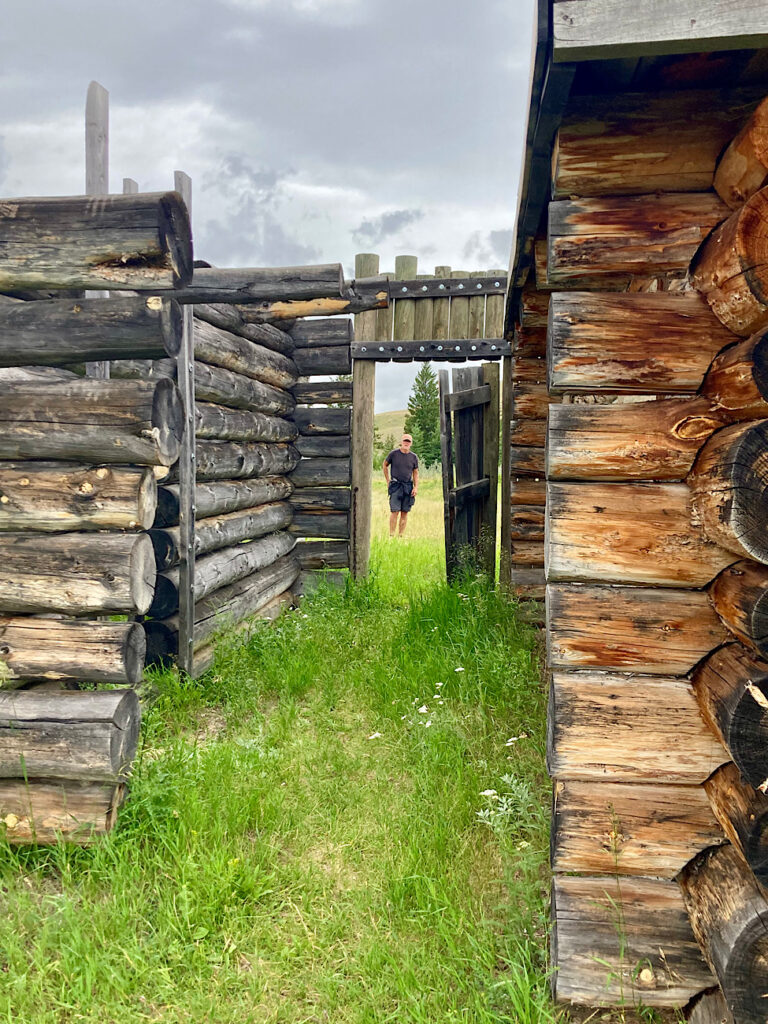
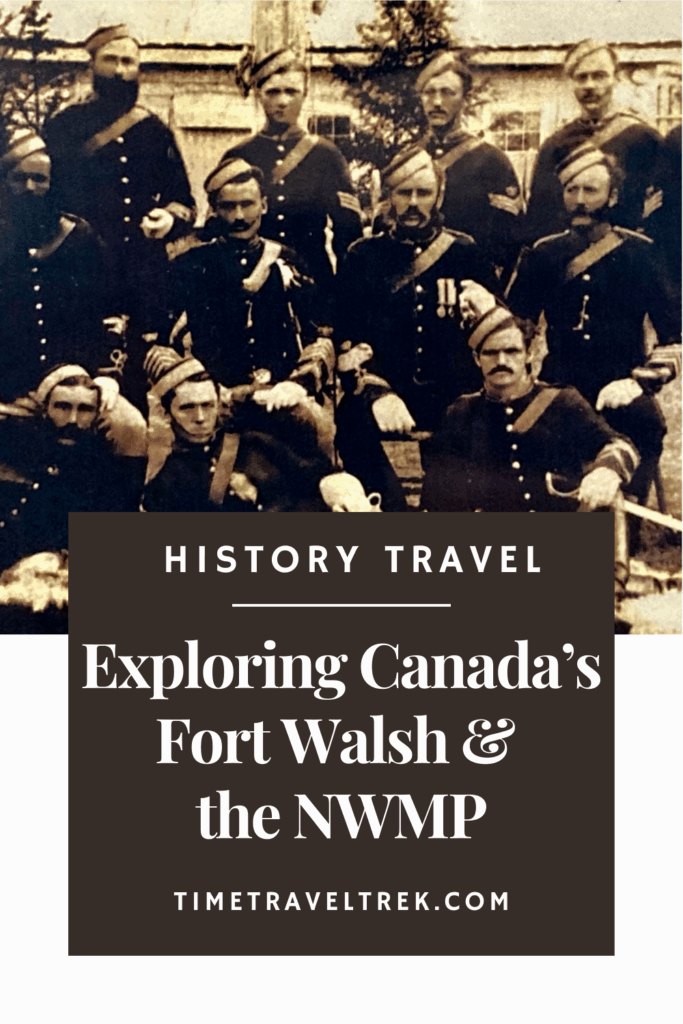
Leave a Reply